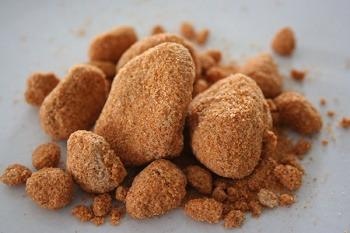A new peer-reviewed paper from Freeman Technology highlights the unique value of dynamic powder testing for the elucidation of caking mechanisms, focusing on non-homogeneous caking or crusting. The paper is particularly helpful for engineers looking to understand the causes and impact of caking, and how they may influence storage solutions for raw materials and products. It can be accessed at: https://doi.org/10.1016/j.partic.2020.10.012
 During storage, many powders have a tendency to cake, especially as a result of exposure to moisture. This can detrimentally impact flow properties, processing performance, product quality, and value. Caking may be preventable and can be a relatively minor problem if it is easily reversed. However, it can also be irreversible, producing material that is not easily returned to a usable state. Combatting caking relies on quantifying the sensitivity of a powder, and the factors that are most influential.
During storage, many powders have a tendency to cake, especially as a result of exposure to moisture. This can detrimentally impact flow properties, processing performance, product quality, and value. Caking may be preventable and can be a relatively minor problem if it is easily reversed. However, it can also be irreversible, producing material that is not easily returned to a usable state. Combatting caking relies on quantifying the sensitivity of a powder, and the factors that are most influential.
“The measurement and quantification of caking in excipients and food products with an emphasis on the non-homogeneous interaction with ambient moisture” is an important contribution to the study of caking behavior. It includes detailed experimental work that shows how both homogeneous and non-homogeneous caking can be detected and quantified using powder rheology. A key focus is showing how to apply dynamic testing to differentiate the caking behavior of powders, enabling informed decisions to be made on storage and handling strategies.
Dynamic powder testing quantifies powder flowability from measurements of the axial and rotational forces acting on a blade, or impeller, as it is rotated down through a powder sample. This means that it can detect changes in powder properties as a function of bed height making dynamic testing uniquely valuable for studies of non-homogeneous caking, or crusting. With dynamic testing it is possible to track the impact of moisture migration through a bed, to assess the effect of humidity cycling, to determine whether caking is reversible or not, and directly quantify the strength of aggregated material developed at any point in the bed.
To find out more about how dynamic testing can help you to solve caking and crusting problems take a look at the new article at: https://doi.org/10.1016/j.partic.2020.10.012